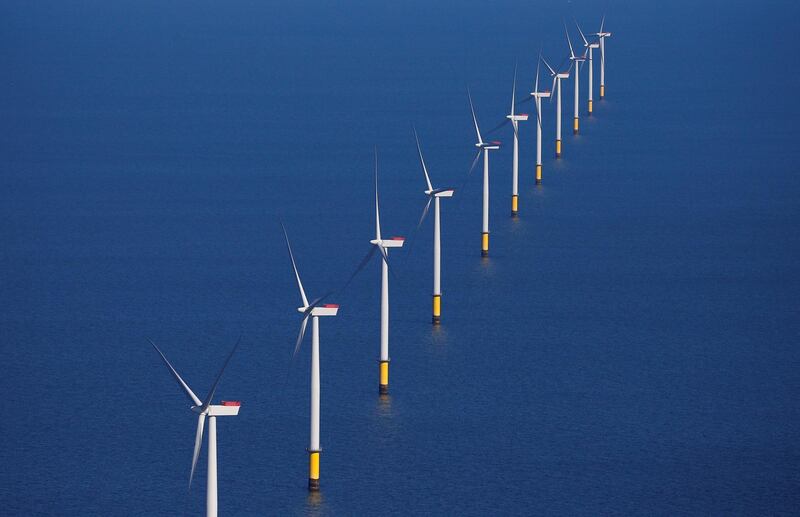Offshore wind could supply the world's entire electricity needs as steep cost reductions, technology developments and government policies unleash the power of this renewable energy source, the International Energy Agency (IEA) said.
Power generated from wind turbines at sea currently accounts for just 0.3 per cent of the world's power generation, but has "vast" potential to grow, the Paris-based institution said in a report. Global offshore wind capacity is projected to increase 15-fold to become a $1 trillion (Dh3.67tn) industry by 2040.
"In the past decade, two major areas of technological innovation have been game-changers in the energy system by substantially driving down costs: the shale revolution and the rise of solar PV,” Fatih Birol, the IEA’s executive director, said. "And offshore wind has the potential to join their ranks in terms of steep cost reduction.”
The agency's report, Offshore Wind Outlook 2019, is what IEA calls its "most comprehensive" global study of the topic to date, combining the latest technology and market developments.
Underscoring wind's growth potential is the development of floating turbines that could be used further out at sea and can supply more electricity than there is demand for in key markets such as Europe, the US and Japan, the IEA said.
Europe, which pioneered offshore wind technology, is set to be the powerhouse of its future development.
Capacity, currently at almost 20 gigawatts, is projected to rise to nearly 130GW by 2040 under current policies, the IEA said.
China is following closely behind Europe as a major player in the industry with recent efforts to expand its construction capacities for offshore wind. By around 2025, China is likely to have the largest offshore wind fleet of any country, overtaking the UK. China’s offshore wind capacity is set to rise from 4GW currently to 110GW by 2040. The technology is particularly attractive in China, where major efforts are under way to reduce air pollution.
Wind power use is also picking up in the Middle East, with the first utility-scale wind power project in the Gulf — a 50 megawatt scheme at Dhofar in Oman developed by Masdar, GE Renewable Energy and Spain's TSK — coming on stream in August. Several schemes have also been developed in Jordan and Egypt.
“Offshore wind currently provides just 0.3 per cent of global power generation, but its potential is vast,” Mr Birol said. “More and more of that potential is coming within reach, but much work remains to be done by governments and industry for it to become a mainstay of clean energy transitions.”








